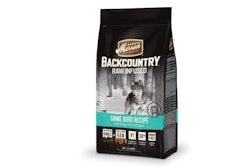More than 50% of US pet retailers expect to sell more premium or custom pet food in the next five years, according to “The Future of the Pet Industry 2015” report recently released by Pet Product News, and nearly half (49%) said optimism about the future of their businesses is driven by customers demanding high-end foods (such as freeze-dried pet foods, now growing 64% a year in US pet specialty retail, according to GfK).
Most of the US retailers surveyed, all owners of independent pet specialty stores, anticipate their sales to increase this year over 2014, with 22% expecting gains of 10% or more and another 52% believing their sales will increase 1% to 10%. Only 6% expect sales declines, with 16% projecting no change. Among the retailers anticipating growth, their optimism is fueled by their customers spending more on pets, with 66% giving that reason, along with the 49% citing the demand for high-end pet food and 55% saying their customers prefer small businesses over “big box” stores.
Besides premium/custom pet food, services and grooming are another driver of future growth, cited by 36% of the retailers surveyed. Among current products sold, dog food accounts for 53% of dog product sales, according to the retailers, and cat food comprises 49% of cat product sales.
Another sign of optimism: 28% of the retailers surveyed reported hiring additional staff in the preceding 12 months. This rise in people working in pet retail seems to run somewhat counter to data on pet food manufacturing from the US Economic Census, though the latter information is now a few years old.
According to the 2012 Economic Census, as reported by the Pet Food Institute’s PFI Monitor publication, total employment in pet food manufacturing declined slightly, .7%, from the previous census in 2007, and the number of employees per establishment decreased 11.1%. Respectively, the numbers were 16,944 total employees in 1997, or 63.94 employees per establishment, and 16,829 total in 2012, or 56.85 per facility.
Yet, thanks to the US pet food market’s rapid growth, productivity, as measured by the average value of shipments per employee, increased 52.7%, from US$856,000 in 2007 to US$1.3 million in 2012, even though about 31% of pet food manufacturing establishments had only one to four employees in 2012. (The next highest percentages were for 50-99 employees, reported by 17% of facilities, and 20-49 employees, at 13.5%.) And wages have risen proportionally, with an 18.1% increase in payroll per employee, or US$46,839 in 2007 to US$55,316 in 2012.
The Economic Census is the US federal government’s official measure of the country’s business and economy, administered by the US Census Bureau on years ending in 2 and 7. Thus, the latest census was conducted for economic activity in 2012, and the bureau has been releasing various sections of the report since late 2014, including the manufacturing section covering cat and dog food manufacturing (category 311111). Earlier this year, the bureau issued the manufacturing geographic area series, with data superseding that previously released.
According to the most recent data (again, reported by PFI Monitor), the value of pet food shipments soared 51.6% from 2007 to 2012, or US$14.5 billion to US$22 billion. That recent sales number for the US pet food market is familiar to us, but it’s a worthwhile reminder of just how rapidly the industry has grown, even with the Great Recession occurring during that period. If you want to feel even better about our industry’s growth, consider that total sales just 15 years ago, in 1997, were only US$8.9 billion—and, the 51.6% growth rate from 2007 to 2012 was nearly two times higher than that for general food manufacturing, which was 26.8%.
The number of pet food manufacturing establishments, or individual facilities making dog or cat food, increased 11.7%, from 265 in 2007 to 296 in 2012, with California (34), Texas (18) and Missouri (17) having the highest number of facilities. With the value of the market rising so much, the value of shipments per establishment grew 35.8%, from US$54.7 million in 2007 to US$74.3 million in 2012. (For further comparison, in 1997, there were 187 dog or cat food manufacturing establishments, producing an average of US$46.5 million in shipments.)
So, all is well and good for dog and cat food; however, the category called “other animal food manufacturing” saw decreases in total industry value, average payroll per employee and number of establishments.
















